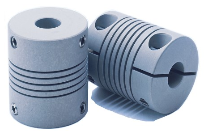Shaft Coupling for Wastewater Treatment
Introduction
In wastewater treatment systems, shaft couplings play a crucial role in connecting various components and transmitting torque. This blog post aims to provide an in-depth understanding of shaft couplings used in the wastewater treatment industry.
1. Importance of Shaft Coupling in Wastewater Treatment
Shaft couplings are essential in wastewater treatment plants as they ensure the efficient transfer of rotational force between shafts. These couplings enable smooth operation and prevent misalignment, reducing equipment wear and downtime.
2. Factors Affecting the Cost of Drive Shaft Coupling Replacement
Replacing a drive shaft coupling can vary in cost based on several factors:
- Equipment Type and Complexity
- Shaft Coupling Size and Material
- Labor Costs and Time Required for Replacement
- Accessibility of the Coupling
- Additional Repairs or Upgrades

2.1 Equipment Type and Complexity
The type and complexity of the equipment directly impact the cost of replacing a drive shaft coupling. More advanced machinery and specialized couplings often come with higher price tags.
2.2 Shaft Coupling Size and Material
The size and material of the shaft coupling influence its cost. Larger couplings and those made from high-quality materials, such as stainless steel or alloy, tend to be more expensive.
2.3 Labor Costs and Time Required for Replacement
The labor costs and time needed for the replacement process are significant factors in determining the overall cost. Skilled technicians and complex installations may increase the expenses.
2.4 Accessibility of the Coupling
If the coupling is located in a hard-to-reach area, additional effort and time might be required for the replacement, leading to higher costs.
2.5 Additional Repairs or Upgrades
In some cases, the replacement of the drive shaft coupling may require additional repairs or upgrades to ensure optimal performance. These additional tasks can add to the overall cost.

3. Types of Couplings
There are various types of couplings available for different applications. Some common types include:
- Flexible Couplings
- Torsionally Rigid Couplings
- Fluid Couplings
- Elastomeric Couplings
- Metallic Membrane Couplings
Each coupling type offers unique advantages and is suitable for specific operational requirements.
3.1 Flexible Couplings
Flexible couplings provide torsional flexibility, compensating for slight misalignments and reducing vibration transmission. They are commonly used in wastewater treatment systems to protect sensitive equipment.
3.2 Torsionally Rigid Couplings
Torsionally rigid couplings are ideal for applications that require precise torque transmission and minimal shaft misalignment. These couplings ensure accurate and efficient power transfer.
3.3 Fluid Couplings
Fluid couplings use hydraulic power transmission to transmit torque, allowing for smooth acceleration and deceleration. They are commonly used in pumps and mixers in wastewater treatment plants.
3.4 Elastomeric Couplings
Elastomeric couplings utilize flexible elastomer elements to transmit torque while absorbing shock and dampening vibrations. They are suitable for applications with high levels of misalignment and shock loads.
3.5 Metallic Membrane Couplings
Metallic membrane couplings offer high torque capacity, zero backlash, and excellent torsional stiffness. They are commonly used in precision machinery and demanding wastewater treatment processes.

4. Marine Shaft Coupling
A marine shaft coupling is specifically designed for use in marine applications, such as ships and boats. These couplings provide reliable torque transmission and compensate for misalignment caused by vessel movements.
5. Selecting and Customizing the Right Shaft Coupling
When choosing or customizing a shaft coupling, several parameters and practical considerations need to be taken into account:
- Shaft Diameter and Torque Requirements
- Operating Conditions (Temperature, Humidity, etc.)
- Misalignment Tolerance
- Space Limitations and Installation Requirements
- Environmental Factors (Chemical Resistance, Corrosion Protection)
By carefully considering these factors, the most suitable shaft coupling can be selected or customized to ensure optimal performance and longevity in the specific application.

HZPT – Your Trusted Provider of Shaft Couplings
HZPT, established in 2006 and located in Hangzhou, China, is a leading manufacturer and supplier of high-quality shaft couplings. With a product portfolio comprising over 10 series and thousands of specifications of gearboxes, including planetary gearboxes and spiral bevel gearboxes, we specialize in high-torque precision custom-made reducers.
Our advantages include:
- Over 20 Years of ODM and OEM Experience
- 100% Pre-Delivery Testing
- 24/7 Customer Service
- Market-Driven Product Design and Innovation
- Factory-Direct Pricing
At HZPT, we offer customized solutions to meet your specific requirements. Whether it’s OEM, ODM, or packaging and branding, we are committed to providing excellent products and services.
Contact us now for all your shaft coupling needs, and our team will respond within 24 hours.
Visit our website: https://www.hzpt.com/